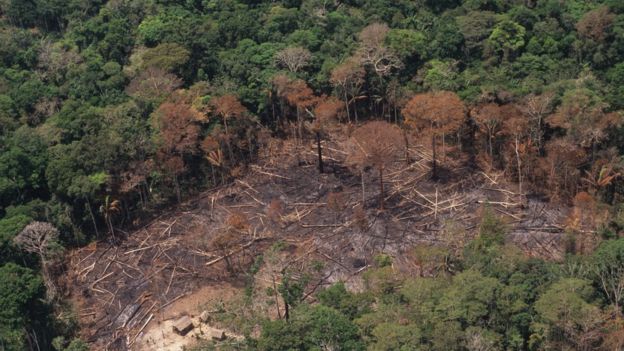Sam Mangusho Cheptoris, the Cabinet Minister of Water and Environment has expressed concerns over the continued depletion of Uganda’s natural forests and wetlands.
Uganda’s
forest cover has been depleted to 8% up from 24% in 1990s, largely attributed to
human encroachment for different activities such as tree cutting for charcoal
and timber as well as agriculture.
Speaking during the manifesto week on Wednesday, Cheptoris said most Ugandans
were bitter with the management of forests in Uganda.
He said however that majority of forest cover that has been lost has been under
private land.
According to Cheptoris, the ruling NRM recognizes the important role forests play in the ecosystem.
The NRM government in its Manifesto committed itself to demarcate and gazetted critical wetlands and fragile ecosystems in the country that were under great threat of encroachment and degradation, with a view of maintaining their integrity.
Cheptoris says since 2016, the Ministry of National Water and Environment has demarcated over 88.7Km wetland boundary in districts of Pallisa, Arua, Gulu, Amuru, Maracha, Lira, Hoima, Masindi, Buhweju, Bushenyi, Mbarara, Mbale, Namutumba, Wakiso, Mukono, and 60km of River Nile buffer zone in Jinja, Kayunga.
He furthers that over of 1,535 hectares of critical wetlands in Mbarara, Kiruhura, Aleptong, Dokolo, Lira, Pallisa, Kumi, Kampala, Wakiso, Kayunga, Lwengo, Masak and Sheema were restored to secure their ecological and biodiversity integrity.
On restoration of degraded natural forests in forest reserves, Cheptoris says they seek to strengthen policing to protect forest reserves and forests against illegal activities.
As at June 2018, a total of 2,511 Hectares of natural forest have been restored by the Forestry Authority. He pointed out that what remains a challenge to them are investors who have fraudulently acquired land occupied by the forests.
According to Cheptoris, the ministry was shocked about the planned takeover and demolition of part of Bugoma Forest, a protected tropical forest situated southwest of Hoima and northeast of Kyenjojo.
The forest, gazetted in the 1930s, is under the mandate of the National Forestry Authority in 2003. According to the Fortune of Africa, the forest is endowed with a high biodiversity with 24 species of mammals, 465 species of trees, 359 species of birds, 289 species of butterfly and 130 species of moths.
Tom Okello Obong, the Executive Director of the National Forestry Authority says, for now, Bugoma Central Forest Reserve is safe after government appealed the Masindi High Court ruling recently that okayed the destruction of 22-square miles of for sugarcane growing.
Bugoma Central Forest Reserve sits on a total area of 41,100 Hectares, about 411 Square Kilometres. The company which wanted to put a sugarcane plantation claims 14% of this prime forest, equivalent to 60 Square Kilometres (about 22square miles).
“For now, Bugoma is safe. The company came to destroy it and they were stopped. And the case is in court,” Obong said on Wednesday.
According to Obong, the issue of Bugoma, just like Wamale forest reserves in Bbale Sub-county in Kayunga District has been one those key forest land grabs that have haunted the authority to pave way for Sugar cane plantations.
Environment Minister Cheptoris says majority of these forests have been encroached on and illegal activities continue to occur due to scarcity of environmental protection force.
According to Obong, there are only 187 police officers under the environmental protection unit out of the required 350 personnel.
“We feel if the number could be raised to about 350 personnel, we feel it could help. But in the long term situation, we are looking at an ideal number of about 500 officers and men to help in the protection of the natural resources in Uganda,” Obong said.
Obong also contends that illegal logging and charcoal burning in Mabira forest has been largely facilitated by the communities living within the forest.
–URN





